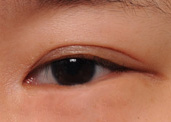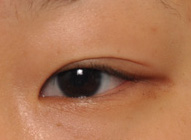The lack of a well defined upper eyelid crease in combination with an epicanthal fold is the most common aesthetic Asian eyelid ‘deformity’. I put the word deformity in parentheses because it is very common to have a monolid in Asians and it is not really a true deformity in the biologic sense. But it is most certainly the single one feature that is most commonly treated by aesthetic surgery in the Asian face.
A wide variety of double eyelid procedures have been described from non-excisional suture methods to open excisional suture techniques. There is no one uniformly accepted method. The same may be said for the accompanying epicanthal fold. Despite its small size, an equally diverse number of tissue rearrangement techniques have been described for it.
What is unique about the epicanthal fold compared to the eyelid crease is that the concern about scarring is more significant. The scar in double eyelid surgery is the actual skin crease whose presence is usually seen as a good thing as long as it is not excessive or hypertrophic. A prominent line or scar at the inner eye from a medial epicanthoplasty, however, is not so favorably seen. This is why tissue arrangement patterns have been devised for it in an effort to minimize scarring in an area where the margin between a good looking scar and that of an undesirable one can be very narrow.

Dr. Barry Eppley
Indianapolis, Indiana



